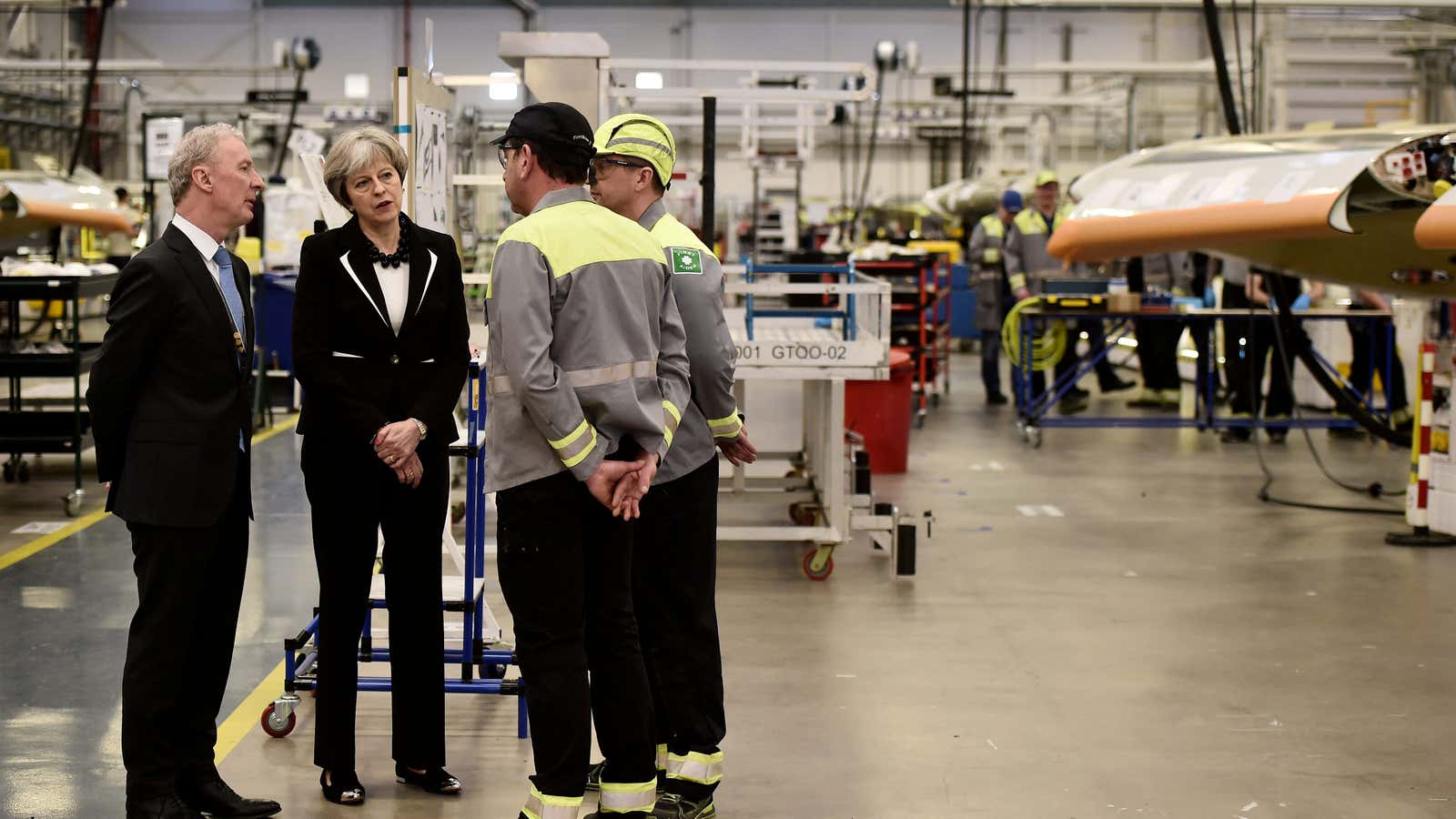After the UK economy recorded its worst performance for six years in 2018, things are looking up. For now.
UK GDP increased by 0.5% in the first quarter of 2019, up from a sluggish pace of 0.2% in the final three months of last year, the Office for National Statistics (ONS) said today.
The pick-up in growth was driven by a 2.2% increase in manufacturing output. What was behind it? Companies preparing for Brexit. The initial deadline for leaving the European Union was set for March 29; with parliament deadlocked over transitional arrangements, companies feared disruptions to their supply chains and trade in the event of a “no deal” Brexit. As a result, stockpiling at factories broke records, and UK manufacturers were busier than their counterparts in any other major developed economy.
The stockpiling boosted most manufacturing industries, particularly the pharmaceutical sector. The government told pharma firms to boost their medicine stocks to cover an extra six weeks of supply, in case of Brexit-related disruptions. In the first quarter of 2019, manufacturing activity in the pharmaceuticals industry increased by nearly 10%, with the ONS attributing that jump to Brexit preparations.
Now that Brexit has been delayed to the end of October, the boost to economic growth looks unsustainable. “With warehouses bulging, we now expect inventories to subtract from growth in the coming months,” Mike Jakeman, senior economist at PwC, said in a research note. As manufacturing growth wanes, it exposes weakness in the rest of the economy.
In the first quarter, net trade had a negative effect on GDP, while growth in the services sector slowed a bit, from 0.4% in the fourth quarter to 0.3% in the first. Business investment grew by a relatively strong 0.5%, but the ONS warned that “these figures should be interpreted with some caution as early estimates of business investment can be prone to revision.”
The ONS also noted that the apparent economic strength of the first quarter was in part due to how bad growth in the December was, when monthly GDP fell by 0.3%. There was a rebound in January to 0.5% growth, but then a deceleration in February and, by March, the UK economy was contracting again.
